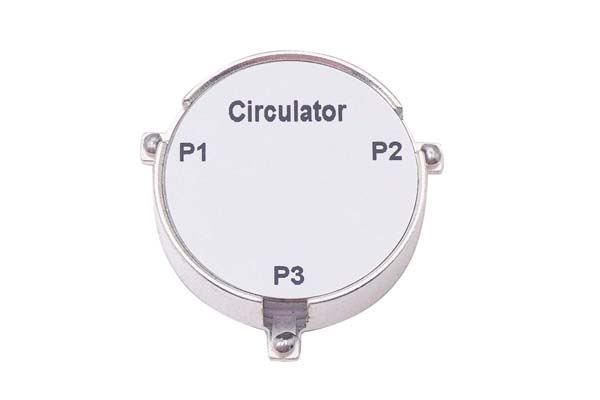3-Port Circulator is an important microwave/RF device, commonly used in signal routing, isolation and duplex scenarios. This article briefly introduces its structural principle, performance characteristics and typical applications.
What is a 3-port circulator?
A 3-port circulator is a passive, non-reciprocal three-port device, and the signal can only circulate between ports in a fixed direction:
Input from port 1 → output only from port 2;
Input from port 2 → output only from port 3;
Input from port 3 → output only from port 1.
Ideally, the signal transmission of a 3-port circulator follows a fixed direction: port 1 → port 2, port 2 → port 3, port 3 → port 1, forming a unidirectional loop path. Each port transmits signals only to the next port, and the signal will not be transmitted in reverse or leaked to other ports. This characteristic is called “non-reciprocity”. This ideal transmission behavior can be described by a standard scattering matrix, indicating that it has low insertion loss, high isolation, and directional transmission performance.
Structural Types
Coaxial, Drop-in, Surface Mount, Microstrip, and Waveguide types
Typical Applications
Isolator Use: Commonly used in high-power microwave systems to protect transmitters from reflected wave damage. The third port is connected to a matching load to achieve high isolation.
Duplexer Function: In radar or communication systems, it is used for transmitters and receivers to share the same antenna without interfering with each other.
Reflection Amplifier System: Combined with negative resistance devices (such as Gunn diodes), circulators can be used to isolate input and output paths.
Post time: Jul-25-2025

 Catalogue
Catalogue




